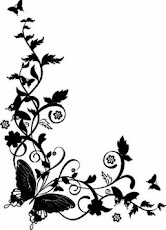I get a lot of people asking me about what Pilates is.
Firstly, the name is Pilates and not Pilate. It's named after Joseph Pilates who founded the movent early in the 20th century. More about him later!
It's a form of exercise that is designed to strengthen and lengthen the muscles. It's primary focus is the core - so the muscles around the pelvis, abdomen and spine - but also the other muscles in the body. It also trains the deep muscles (local muscles) which are essential for spinal and joint stability, as well as the global muscles which are larger and more superficial and tend to be normally the focus in a standard gym environment.
Most people have seen or heard of Pilates in the gym as mat classes. These can be great but often the classes are large and people come and go so you might not get the full benefit if you've not had the basic foundation before you start.
There is also equipment involved - I teach the reformer at the moment and am about to train in the cadillac, barrel and chair. These are fantastic pieces of equipment that allow us to really cater for all levels. The reformer can be used in small classes or in 1-1 training whereas the other equipment is better for 1-1.
The reformer has a sliding carriage which glides along rollers and has a system of springs for resistance. It can be used for a wide variety of exercises. We don't use weights but instead the springs allow for gradual resistance as the muscles contract - this means longer leaner looking muscles and not bulky ones! it also means that the muscles are being used to their full capacity in a safe way with less stress on the tendons and ligaments. Additionally we can work on flexibility as well as strength.
I trained with STOTT PILATES® which is a modern take of Pilates' original method - they've worked with people like physios and sports medicine and fitness professionas. Whereas other methods work with a straight back, for example, we focus on the spine's natural curves aiming to strengthen the muscles around the back and shoulder. Read the info on the link as it's really interesting!
But this means we can train people from those who need rehabilitation from injury etc all the way up to elite atheletes.
I hope that helps some. Will write about Joseph Pilates more at another point.
Z
Thursday, February 18, 2010
Subscribe to:
Comments (Atom)


